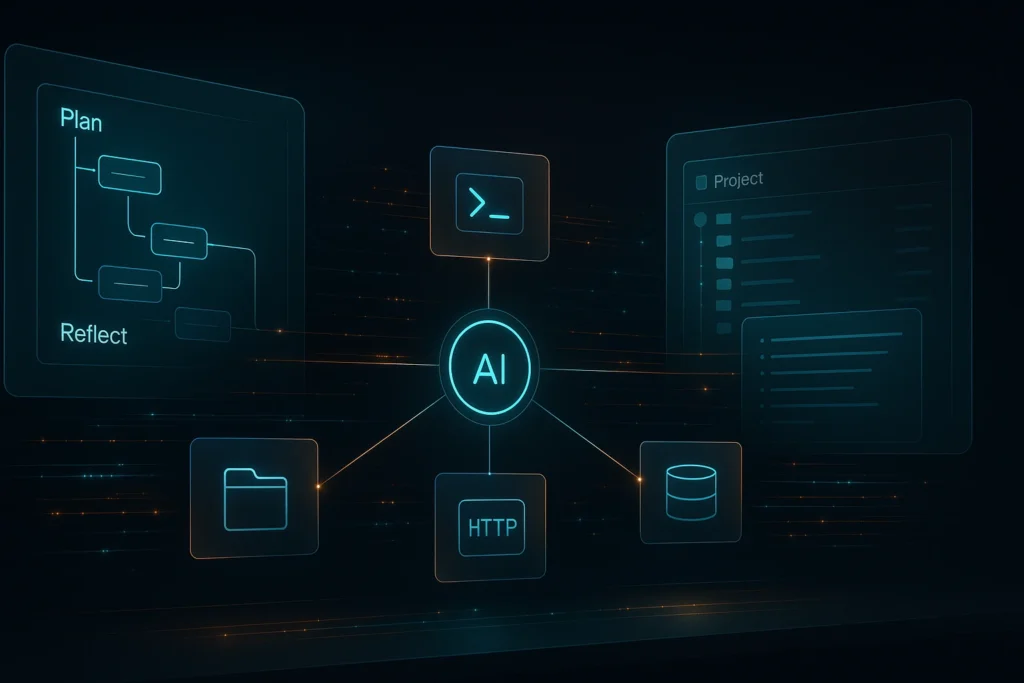Anthropic has released the Claude Agent SDK, a developer toolkit for building production-ready agents on top of the same harness that powers Claude Code. In plain terms: you get a battle-tested scaffold for tool use, planning, and long-running tasks—without reinventing the “agent loop” yourself. Anthropic’s engineering post walks through the why and how, marking a clear step from coding assistant toward general-purpose agents. (Anthropic)
What makes this SDK interesting isn’t just a nicer API. It exposes the core runtime that Anthropic uses internally for agentic coding—now generalized beyond code. The docs describe full feature parity with Claude Code’s default capabilities and the same file-system configuration model. That means you can define tools, policies, and workspaces declaratively, then spin up agents that read and write files, call subprocesses, and coordinate tasks in a reproducible way. If you’ve struggled with home-rolled “while-True plan-act-reflect” loops, this brings structure and guardrails out of the box. (Claude Docs)
Under the hood, the SDK bakes in patterns you’d otherwise have to curate from blog posts and papers: sub-agents for dividing complex jobs, tool orchestration with sensible defaults, and state management tied to the project’s file tree. That design makes local development and CI far saner—your agent’s context and artifacts live alongside code, logs, and checkpoints instead of disappearing into ad-hoc caches. The official examples show quick starts and streaming modes you can run from IPython, a practical way to debug how your agent plans and executes over time. (Claude Docs)
Critically, the release lands alongside Claude Sonnet 4.5, which Anthropic positions as its best model for long, tool-heavy workflows—think agents that edit code, run terminals, or navigate multi-step knowledge work. If you care about agents that don’t stall on hour two, the pairing matters: the model’s improved tool success and sustained autonomy are what give the SDK room to shine on non-toy tasks. For teams deploying on AWS, Sonnet 4.5’s availability in Amazon Bedrock further lowers the path to enterprise integration and governance. (Anthropic)
So where does this fit in a modern stack?
- Agentic coding & DevOps: spin up project-scoped helpers that refactor modules, run tests, and file PRs—using the same harness as Claude Code but tailored to your repos and conventions. The SDK’s headless mode lets you keep everything inside your own terminals and pipelines. (Claude Docs)
- Data & analytics copilots: define safe tools for SQL, lineage lookups, and metrics snapshots; bind them to a workspace where the agent leaves auditable breadcrumbs (plans, queries, outputs) as files. (Claude Docs)
- R&D and LLMOps: wrap evaluation, red-teaming, and prompt iteration into sub-agents with clear interfaces, then version the whole thing like code. Sonnet 4.5’s longer, more reliable runs help finish complex experiment sweeps. (Anthropic)
Best practices? Anthropic’s guidance from earlier Claude Code posts still applies: keep tools small and composable; store intermediate artifacts; and use explicit checkpoints so agents can resume or be audited. With the Agent SDK you formalize these habits—turning clever demos into systems that other engineers can read, run, and review. (Anthropic)
If you’ve been waiting to move from “chat with a model” to agents that can actually do work inside your environment, the Claude Agent SDK is a pragmatic on-ramp: opinionated where it should be, flexible where it must be, and paired with a model that’s designed for long, tool-rich sessions. Start with the engineering guide, skim the docs for the filesystem layout and sub-agent pattern, then clone the examples to try streaming runs against your own workspace. From there, you’ll have a skeleton you can adapt—without rebuilding the agent world from scratch. (Anthropic)
Further reading: Anthropic’s announcement and docs (engineering + API), Sonnet 4.5 capabilities, and Bedrock availability for enterprise deployment. (Anthropic)
